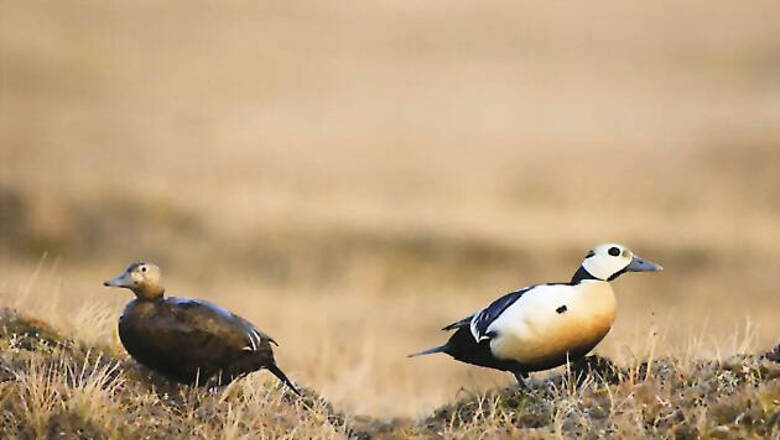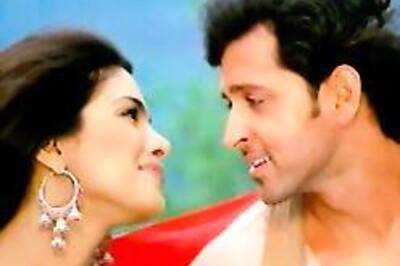
views
The T-shirt sums it up: Don't F**k with Iceland – We may not have cash but we've got ash!
Cash refers to the fallout from an explosion: The effects of the global financial crisis on Iceland. Traditionally based on geothermal energy, fishing and agriculture, Iceland tried to reinvent its economy through financial services; one observer described it as "Wall Street on the tundra". The results were disastrous, with the economy collapsing in 2008.
But we are not here to study that phenomenon. Our interest is Iceland's geology and biodiversity, not its finances. But Iceland didn't seem to want us. Several planned visits were disrupted by volcanic activity.
The most famous recent eruption—the cloud of volcanic ash disrupted global air travel for weeks—was that of Eyjafjallajökull in March and April 2010. A T-shirt provides assistance: Eyjafjallajökull is so easy to pronounce 'Ay-uh-fyat-luh-YOE-kuutl-uh'.
In May 2011, Grímsvötn, a volcano located under the thick ice of one of Europe's largest glaciers, Vatnajökul, erupted, spawning yet another T-shirt: Grímsvötn: So Much Easier to Pronounce than Eyjafjallajökull.
Fortunately, the ash cloud passed, allowing us to visit. My partner, Jade, and I had sworn that if we failed on this attempt, we weren't trying again, ever!
Volcanoes dot the Icelandic landscape. It sits on a volcanic hot spot in the middle of the North Atlantic Ocean. The Mid-Atlantic ridge, which cuts through it, is literally pulling it apart, making it geologically young and active. It has lava fields, rugged hills, glaciers, glaciated valleys, fiords, glacial rivers and hundreds of volcanoes.
Volcanic eruptions are a regular part of Iceland's history. In the 1960s, undersea volcanic activity off Southern Iceland created the island Surtsey, now a living laboratory where scientists study the development of new life forms.
Evidence of raw geo-thermal activity is everywhere. The earth is alive. The hissing sounds, the steaming vents, fumaroles and boiling mud pools are a constant reminder of Joseph Conrad's observation: "[A civilised life is] a dangerous walk on a thin crust of barely cooled lava which at any moment might break and let the unwary sink into fiery depths."
Even Iceland's glacial ice is different. Near Eyjafjallajökull, what appears to be rock is actually glacial ice, blackened by massive amounts of volcanic ash.
The scenery is surreal, indescribably alien. It is easy to see why Jules Verne had his travellers set off on their journey to the centre of the earth from Iceland's Snæfellsnes.
Iceland's volcanism is a major attraction. Even eruptions bring tourists to the island, keen to get close views of the volcanic activity. When Eyjafjallajökull erupted and before the ash cloud prevented aircraft movement, tourists rushed to Iceland to get up close and personal with the volcano.
The hardy trekked for 12 hours up the mountain through snow and ice to get a better view of the exploding volcano. The less hardy took helicopters up to a suitable vantage point. At night, tourists gathered to watch the spectacular natural sound and light show as lava flows glowed eerily and ash and magma illuminated the sky.
Volcano tourism has its risks. Lava bombs the size of large rocks fell from the sky onto the snow very near where one group was standing. Our guide, Trausti, who told us of this, concluded with classic Icelandic understatement, "Maybe they were a little close."
The landscape's beauty is severe but overwhelming. While there are higher or more famous waterfalls, those in Iceland are more primal, untamed. At Gullfoss, a massive volume of water flows at speed down a three-step staircase and then abruptly plunges into a crevice over 30 metres deep, giving the appearance that the river has disappeared into the earth. As you approach, a thunderous roar that drowns out all human sounds proclaims the invisible waterfall's presence. Both Jade and I stand quietly for minutes on end, the noise creating its own meditative state.
There are no life-threatening volcanic eruptions during our stay, so we console ourselves with the bird life.
The oceans of Iceland are highly productive, attracting birds. The abundant supply of fresh water and its location, an isolated landmass in the North Atlantic, makes it a natural nesting location or stopover on migrations.
Lake Myvatn—in Icelandic my (midge) and vatn (lake)—and the surrounding wetlands are exceptional for waterbirds, especially ducks. Algae, water plants and aquatic insects provide an attractive food supply for many species of ducks, each distinctive in appearance. Take the adult male Harlequin Duck: Slate blue with chestnut sides and white markings including a white crescent at the base of the bill and a white ear-patch. You can see why it's named for a colourful musical theatre character.
The coastal areas are home to large populations of seabirds. At Látrabjarg, the western-most part of Europe, we walk along Europe's largest bird cliff, some 14 kilometres long and up to 440 metres high. The cliffs are home to millions of birds, including puffins, northern gannets, guillemots and razorbills. In some cases, the birds constitute a large proportion of the global population of the species.
















Comments
0 comment